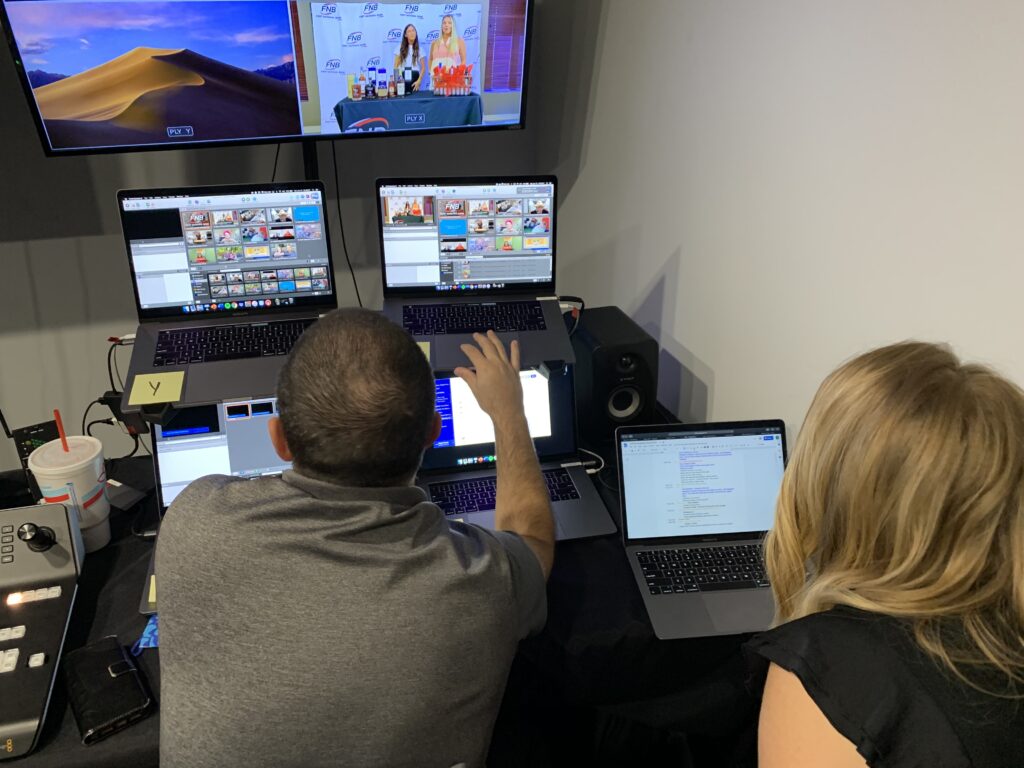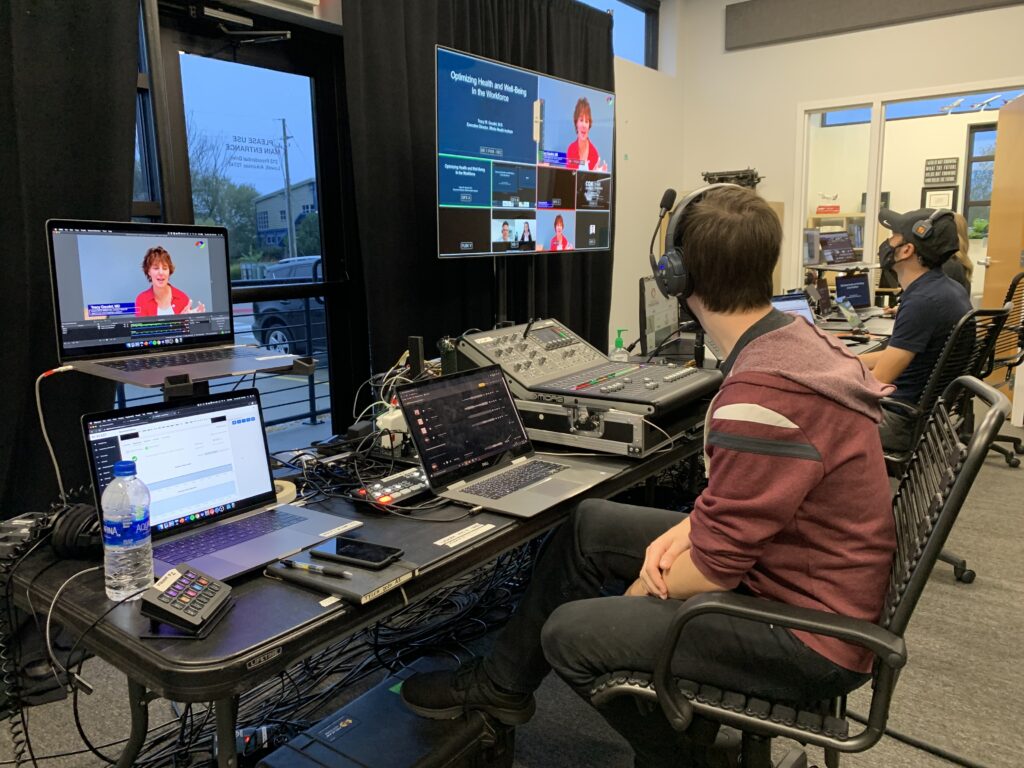This is a question event planners ask often. In the pre-pandemic world, this was rarely asked. During the pandemic, it was a no-brainer. Now, with most events taking on a hybrid model, the answer is more complex.
What Does Pre-Recording Look Like?
First, let’s get on the same page about how this works. Pre-recording your keynote speaker can be simple. For the bare minimum, you host a Zoom, hit record, and download the file. For better results, your production company can ship you a kit for higher quality or send a videographer to record the presentation for you.

How to Decide: Pre-Recording vs Live
Benefits to Pre-Recording Presentations:
- Recruit higher-talent presenters by not requiring a 3-day time commitment from them for a 1-hour presentation.
- Reduce the risk of flight delays, health concerns, or anything week-of because everything is recorded two weeks before.
- Simplify your multi-day conference agenda planning. Pre-recorded content means you can slot other more constrained presenters when they need to take the stage.
- Post-Production Video Editing can bring greater visuals than in-person. Imagine the b-roll, the graphics, all that can be done to spruce up a talk and bring it to life beyond a speaker at a podium.
- Greatest of all, you gain a valuable, high-production-value piece of content for the future.
Each of those could be elaborated on in their own article, but for now, hopefully, those get your wheels turning.
Drawbacks to Pre-Recording Presenters:
- There is just a certain energy to LIVE.
- There is the possibility that some audience members could resent the fact that the presenter didn’t take the time to be present with them. Or they could have shorter attention spans for a presentation they know is pre-recorded.
- Attendee Networking. Time and time again, people come to conferences to network. When your attendees know you’ve got a big-name presenter who’s going to be in the room, it’s intriguing that there’s a chance to meet them in person.
- Speaker Networking. This is perhaps the most commonly overlooked value of in-person presentations. Don’t miss the value of having thought leaders hang out in your green room. Because they made valuable connections, they’ll come back next year and bring others with them.
It looks like the pros outweigh the cons with a score of 5 to 4. But don’t take the numbers too literally. There are a few more neutral points to consider before you can make a final decision. In an environment of decisive action, sometimes a few constants can be a relief.
In-Person and Pre-Recorded Presentations Have a Couple Things in Common, As Well
- You can still have Q&A, live in-person, or presenting remotely. In-person, a few well-placed handheld mics for attendees to approach do the trick. The same applies online, but use a moderator to bridge the gap between the remote questions and the audience.
- Good content is good content. Pre-recorded or presented live, when the content is engaging, it just works. Your attendees need to hear something inspiring. If you convey the information in a distraction-free, high-production way, your audience will be inspired regardless of the delivery method.

Regardless of Whether You Choose Virtual or In-Person Presentations, You Need Good Production
Live, in-person presenters can’t engage an audience without a proper stage, audio, video and lighting. Remote, pre-recorded speakers can’t convey their content if there’s not a quality recording with good caliber video editing.
The best way to make your final decision is based on the makeup of your event audience.
- If the majority of the audience is in the room, push your keynote presenter to be in the room.
- If your audience is online, having a pre-recorded speaker with quality video editing can be more engaging than a single camera shot on black pipe and drape in the room.
You are there to plan an event for the people you’ve assembled. Cater to their natural tendencies by building a presenter plan that aligns to their environment. You can go outside the recommendation for a few presenters here and there if you’re doing a multi-day conference, but follow the majority as a rule.
Majority in-room audience means majority in-person presenters for the majority of the agenda.
No important message should be hindered by technical difficulties. You want your attendees walking away inspired and fulfilled, not dwelling on the fact they couldn’t hear the speaker or the video feed went dead.
